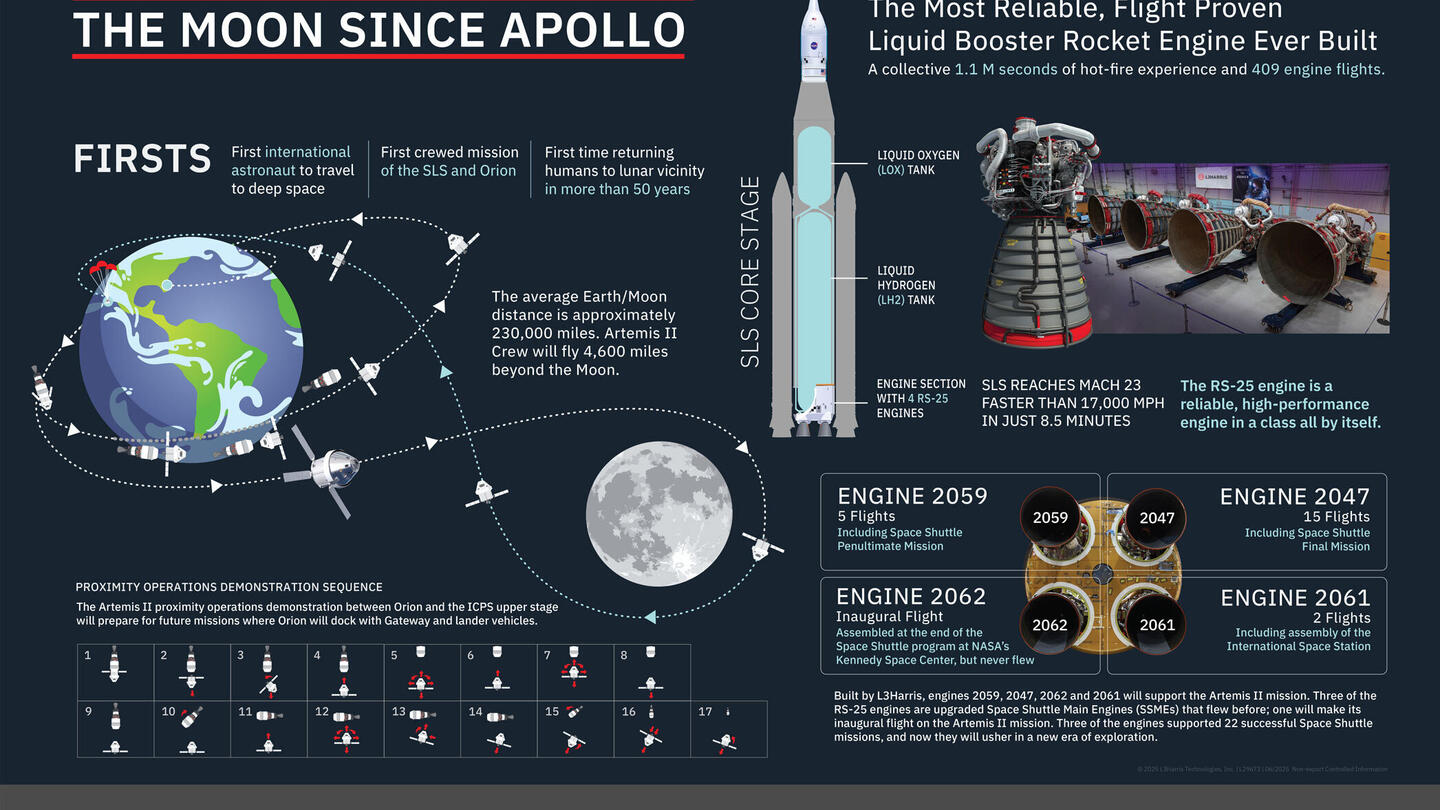[This article has been updated, original publish date: July 6, 2024]
NASA’s second SLS (Space Launch System) rocket core stage, complete with four RS-25 main engines provided by L3Harris’ Aerojet Rocketdyne segment, is making its way to Kennedy Space Center, Florida, in preparation for the historic Artemis II mission.
Slated to launch in 2025, Artemis II is the first crewed flight of the SLS and the Orion spacecraft. The mission’s four-person crew will be the first to depart low Earth orbit in more than five decades and includes the first-ever woman, person of color and international astronaut to make the journey to cislunar space.
“We’re embarking on a new era in space exploration with the crewed flight of Artemis II,” said Kristin Houston, President of Space Propulsion and Power Systems at Aerojet Rocketdyne. "After pioneering reusable rocket engines during the Space Shuttle program, we’re excited to have our RS-25 engines play such a large part in the Artemis campaign.”
The RS-25, formally known as the Space Shuttle Main Engine (SSME), is the first reusable rocket engine. Three of the RS-25 engines on Artemis II are upgraded Space Shuttle Main Engines (SSMEs) that flew before – engines 2047, 2059 and 2061; and one will make its inaugural flight on the Artemis II mission. Engine 2047 flew on STS-135, the final shuttle mission, while engine 2059 flew on STS-134, the program’s penultimate flight and engine 2061 supported assembly of the International Space Station. Between them, they flew 22 space shuttle missions.
The SLS rocket is optimized to deliver crew and cargo to the Moon on a single flight, which is why the engines will not return with SLS.
"The RS-25 engines bring a tremendous legacy of performance and reliability to the Artemis II rocket,” said Mike Lauer, RS-25 program manager at Aerojet Rocketdyne. “These engines were upgraded with new controllers and other features to enable deep space exploration.”





